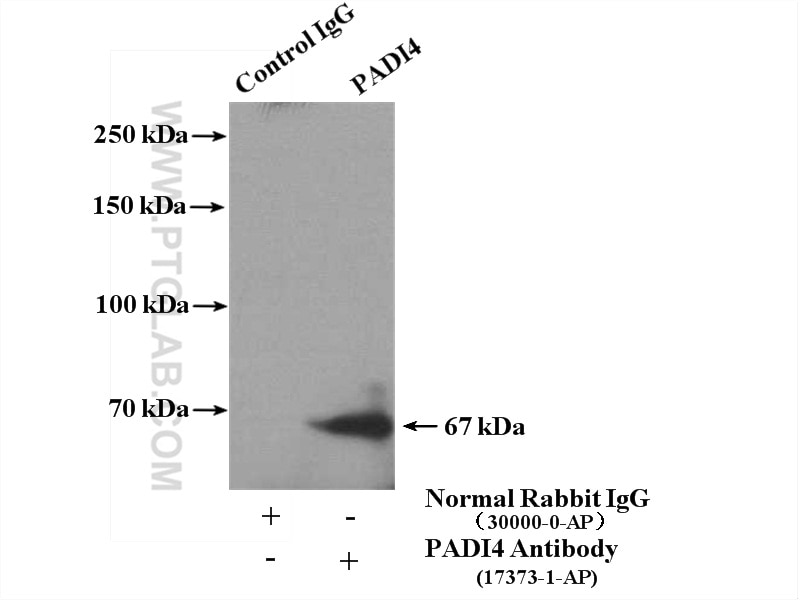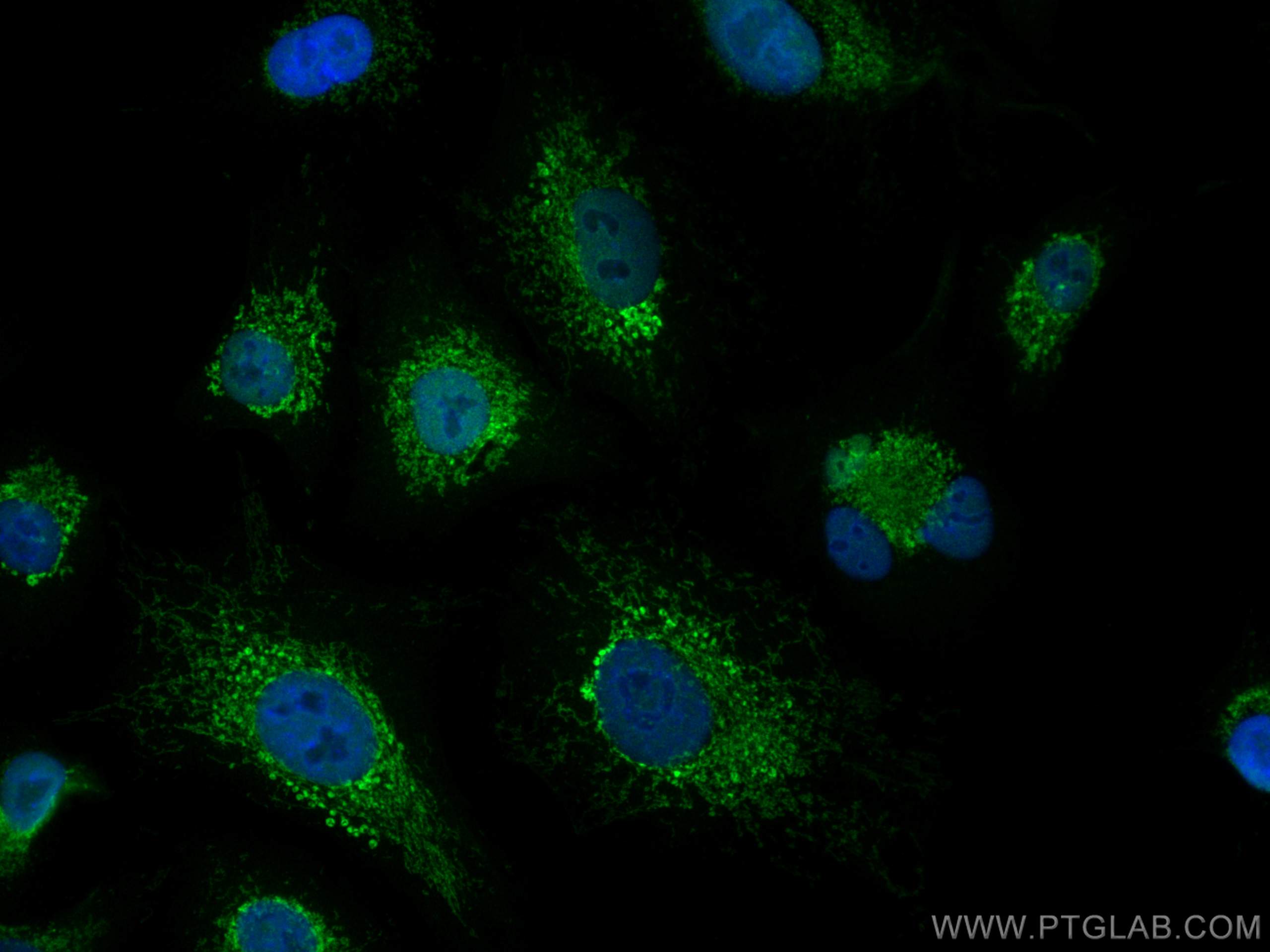Tested Applications
| Positive WB detected in | SKOV-3 cells, mouse spleen tissue |
| Positive IP detected in | mouse spleen tissue |
| Positive IHC detected in | mouse spleen tissue Note: suggested antigen retrieval with TE buffer pH 9.0; (*) Alternatively, antigen retrieval may be performed with citrate buffer pH 6.0 |
| Positive IF/ICC detected in | A549 cells |
| Positive FC (Intra) detected in | HeLa cells |
Recommended dilution
| Application | Dilution |
|---|---|
| Western Blot (WB) | WB : 1:1000-1:6000 |
| Immunoprecipitation (IP) | IP : 0.5-4.0 ug for 1.0-3.0 mg of total protein lysate |
| Immunohistochemistry (IHC) | IHC : 1:50-1:500 |
| Immunofluorescence (IF)/ICC | IF/ICC : 1:200-1:800 |
| Flow Cytometry (FC) (INTRA) | FC (INTRA) : 0.40 ug per 10^6 cells in a 100 µl suspension |
| It is recommended that this reagent should be titrated in each testing system to obtain optimal results. | |
| Sample-dependent, Check data in validation data gallery. | |
Published Applications
| KD/KO | See 2 publications below |
| WB | See 31 publications below |
| IHC | See 9 publications below |
| IF | See 15 publications below |
| IP | See 2 publications below |
| CoIP | See 1 publications below |
Product Information
17373-1-AP targets PADI4/PAD4 in WB, IHC, IF/ICC, FC (Intra), IP, CoIP, ELISA applications and shows reactivity with human, mouse, rat samples.
| Tested Reactivity | human, mouse, rat |
| Cited Reactivity | human, mouse, rat |
| Host / Isotype | Rabbit / IgG |
| Class | Polyclonal |
| Type | Antibody |
| Immunogen | PADI4/PAD4 fusion protein Ag11068 Predict reactive species |
| Full Name | peptidyl arginine deiminase, type IV |
| Calculated Molecular Weight | 663 aa, 74 kDa |
| Observed Molecular Weight | 67 kDa |
| GenBank Accession Number | BC025718 |
| Gene Symbol | PADI4 |
| Gene ID (NCBI) | 23569 |
| RRID | AB_2878398 |
| Conjugate | Unconjugated |
| Form | Liquid |
| Purification Method | Antigen affinity purification |
| UNIPROT ID | Q9UM07 |
| Storage Buffer | PBS with 0.02% sodium azide and 50% glycerol , pH 7.3 |
| Storage Conditions | Store at -20°C. Stable for one year after shipment. Aliquoting is unnecessary for -20oC storage. 20ul sizes contain 0.1% BSA. |
Background Information
PADI4, also named PADI5 and PDI5, catalyzes the citrullination/deimination of arginine residues of proteins such as histones, thereby playing a key role in histone code and regulation of stem cell maintenance. PADI4 is expressed in hematologic and rheumatoid arthritis synovial tissues. PADI4 haplotype associated with susceptibility to rheumatoid arthritis increases the production of citrullinated peptides, leading, in a cytokine-rich milieu, to a break in tolerance to citrullinated peptides processed and presented in the appropriate HLA context. Immunohistochemistry detected significant PADI4 expression in various malignancies and PADI4 expression was not detected in non-tumor tissues. (PMID: 19183436)
Protocols
| Product Specific Protocols | |
|---|---|
| WB protocol for PADI4/PAD4 antibody 17373-1-AP | Download protocol |
| IHC protocol for PADI4/PAD4 antibody 17373-1-AP | Download protocol |
| IF protocol for PADI4/PAD4 antibody 17373-1-AP | Download protocol |
| IP protocol for PADI4/PAD4 antibody 17373-1-AP | Download protocol |
| FC protocol for PADI4/PAD4 antibody 17373-1-AP | Download protocol |
| Standard Protocols | |
|---|---|
| Click here to view our Standard Protocols |
Publications
| Species | Application | Title |
|---|---|---|
Int J Mol Sci Investigation of H2S Donor Treatment on Neutrophil Extracellular Traps in Experimental Colitis. | ||
RMD Open IL-6-PAD4 axis in the earliest phase of arthritis in knock-in gp130F759 mice, a model for rheumatoid arthritis. | ||
Transl Stroke Res Neutrophil Extracellular Traps may be a Potential Target for Treating Early Brain Injury in Subarachnoid Hemorrhage. | ||
Int Immunopharmacol IDH1/MDH1 deacetylation promotes NETosis by regulating OPA1 and autophagy | ||

















